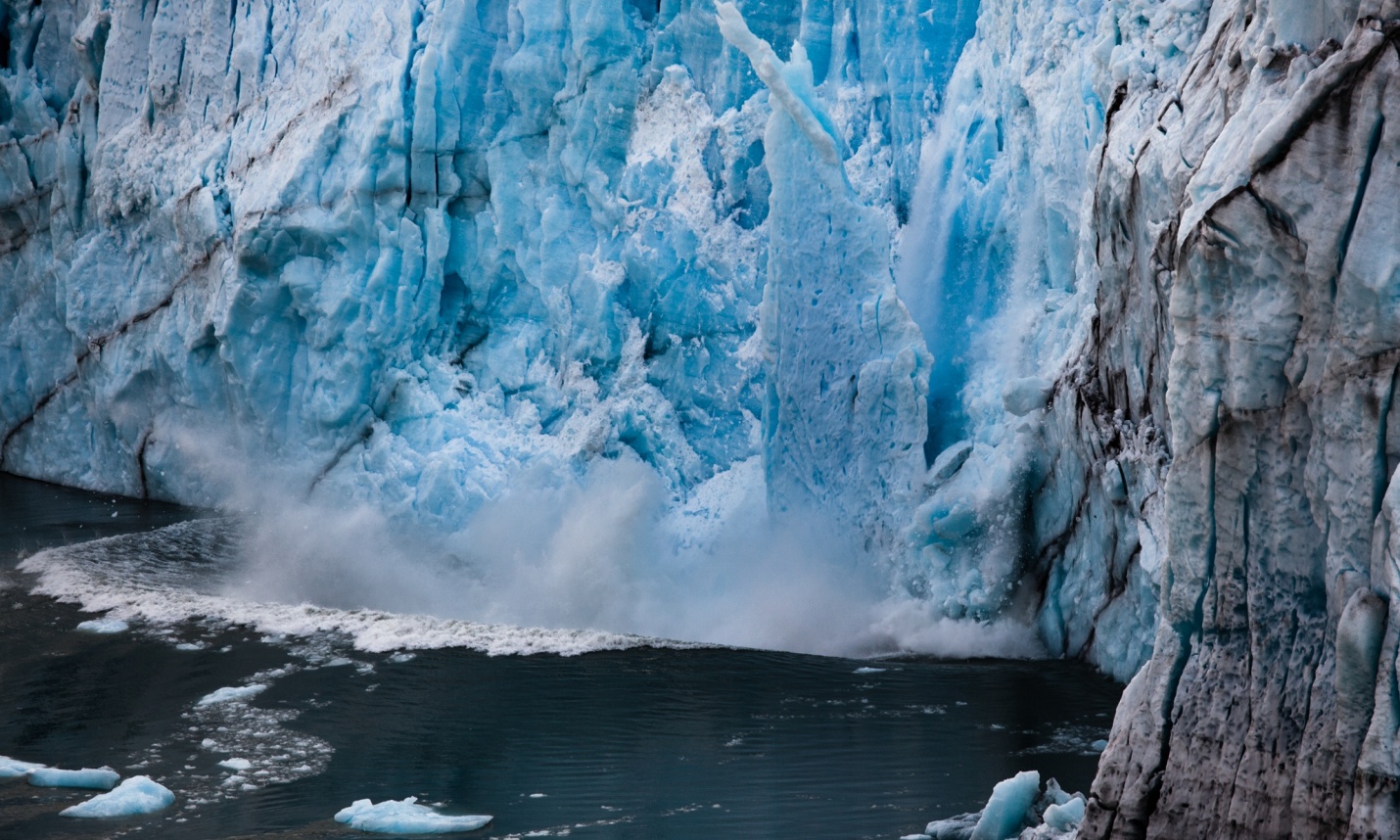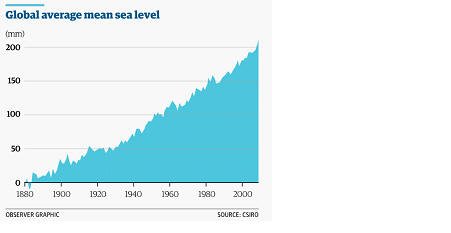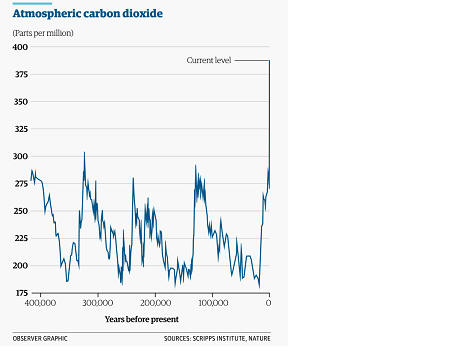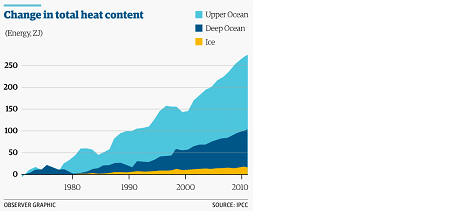 |
| Reviews and Templates for Expression We |
Climate change is not just about science – it’s about the future we want to create

The discussions in Paris in 2015 will be informed by the latest climate science. In our play 2071, which recently completed its inaugural run at the Royal Court theatre in London, directed by Katie Mitchell, we explore the science, its implications and the options before us. A key aim is to leave the audience better placed to participate in the public discourse, in which we all need to play a part.
Climate change is a controversial subject that can raise strong emotions. We are all susceptible to being less open-minded and rational about it than we may appreciate. The climate system is very complex, yet its discussion is often oversimplified. There are gaps in our knowledge, and many scientific uncertainties, some of which are fundamentally unknowable. This makes it extremely difficult to predict precisely what the future holds and to determine exactly what actions, if any, to take. In addition there are economic considerations, political implications and ethical questions that further complicate the way forward.
In 2071 we describe how satellites allow us to probe and map our planet’s key components – atmosphere, oceans, ice, and land – in unprecedented ways. By using computer models to bring together the space data with a myriad measurements made in situ, and by combining these with our understanding of underlying physical laws, it is possible to begin to make sense of what is observed. This provides a grand perspective of the Earth’s system as a whole, of its component parts and the interconnections between them.
The system behaves in complex and often counterintuitive ways. But the fundamental principles of it are quite simple: its component parts interact with each other such that, over time, the amount of energy leaving the planet is equal to the amount entering it from the Sun. The interactions between the atmosphere, the oceans, and the ice on land and sea drive the natural variability of the climate. The system is very responsive. Even a small change in one component can trigger a chain of consequences in the other parts. When such changes alter the energy balance, the effects are felt throughout the entire system, while it adjusts to reach a new balance.
Changing oceans
Since the majority of inbound solar energy is absorbed by the oceans, which cover 70% of the planet’s surface and are dark, any imbalance should be most readily observable there. Sea levels rise as water temperature increases, acting as a global thermometer. By combining data gleaned from beach structures and archaeological data, we know that during the latter part of the Holocene, the unusually stable climatic period the planet has undergone since the end of the last Ice Age, sea-level changes did not exceed 0.2mm per year. Information from tide gauges, and more recently, satellite radars, show that in the late 19th century, sea levels began to rise. Over the 20th century the rate of rise averaged 1.8mm per year. Over the last two decades, the rate has further increased to 3.3mm per year. This may not seem much, but it is geologically significant. The current rate is approaching the 10mm per year which occurred during the transition from the last Ice Age to the current warm interglacial, a major climatic shift. And it is occurring during the warm interglacial, at a time unrelated to the natural ice age cycle.
In 1978 John Mercer, a US glaciologist, described how, in a warming world, a successive collapse of ice shelves extending down the Antarctic Peninsula might occur. He suggested that this would be a warning sign of a more significant sequence of events to come. The Antarctic Peninsula connects to an area of the Antarctic called West Antarctica, where the massive ice sheet sits on bedrock that is up to 2km below sea level. Mercer’s concern was that if the successive collapse reached this far, the pressure of the warmer water at depth would lift the ice sheet, causing water to penetrate deeper and deeper below the ice, reducing friction between the ice and rock, leading to an unstoppable collapse. This would result in a rise in sea levels over time of many metres, as the total volume of ice in West Antarctica is equivalent to a six-metre rise.

Since the 1990s, a successive series of ice shelf collapses has occurred along the peninsula, and parts of the West Antarctic ice sheet are now accelerating into the ocean. And in the northern hemisphere, the satellite and surface data show that the loss of ice from the Greenland ice sheet increased by 600% over a decade following the 1990s. It is estimated that, at present, the melting of ice sheets and glaciers contributes to about half of the observed sea level rise. Apart from a small contribution from human use of aquifers, the rest of the sea level rise is due to thermal expansion – the oceans are warming.
The greenhouse effect
The atmospheric trace gases – water vapour, methane and carbon dioxide – provide an explanation of the planetary energy imbalance. These gases are present in relatively small quantities in our atmosphere, but they have a significant impact on the temperature of the planet since they obstruct the loss of heat from the surface as it passes upwards. This effect, known as the greenhouse effect, causes the Earth’s surface to have an average temperature of 15C. Without it, the surface would be 15C below freezing.
Ice cores drilled from ice sheets and glaciers in the Antarctic and Greenland provide a means of measuring past changes in atmospheric greenhouse gas concentrations. Each year the snowfall creates a layer that compacts to ice and traps bubbles of the contemporary air. The deepest ice cores extracted from the Antarctic are more than 3km long and contain a record stretching back 800,000 years. By melting the ice and measuring the ratios of different atomic isotopes in the water, a history of global temperature can be derived. The relationship between the trace gases and temperature can then be studied.
During each recent cold phase, when on average global temperatures have decreased by 5C, and vast ice sheets have built up over northern high latitudes, the carbon dioxide concentration of the atmosphere dipped to about 180 parts per million. In the warm phases it peaked at around 300 ppm. This year, the CO2 concentration of the atmosphere passed 400 ppm. The rise over the last century is already 100 ppm – the same as the natural change between an ice age and an interglacial warm period, but at a rate more than 100 times faster. And it is in the “warm” direction of increased concentration not experienced by the planet at any point over the last 800,000 years based on the ice core data, and probably not over the two million years judging by the geological record.
This has occurred because the global carbon cycle has been disrupted. The cycle consists of large annual exchanges between the carbon reservoirs of the atmosphere, the land biosphere, the lithosphere (the rocky surface layer of the planet) and the ocean. The exchanges are much greater in magnitude than our own carbon emissions – but, prior to industrialisation, they were in balance. However, in 1712, the invention of the Newcomen steam engine started a chain reaction of innovation, technology and science that spread across the globe. This revolution built the modern world. It was fuelled using cheap, accessible and convenient fossil energy. This has led us to the point where we are currently burning 10,000 million tonnes of carbon per year – a figure that is increasing at a rate of 2% per year.

To date, we have burned an estimated 530,000 million tonnes of carbon. A quarter of the resulting CO2 has been absorbed by vegetation on land, which has bloomed as a result, and just over a quarter by the ocean, which has become more acidic. The remainder will stay in the atmosphere for hundreds to thousands of years because it takes that long for natural processes – mainly rock weathering – to draw carbon dioxide out of the atmosphere. Consequently, since the beginning of the Industrial Revolution, the atmospheric concentration of carbon dioxide has risen by 40%.
The energy imbalance revealed by the ocean, confirmed by rising temperatures and loss of ice, and explained by the disrupted carbon cycle, is evidently being driven by us. It is the unwitting result of our use of fossil fuels. The evidence seems compelling. But since the implications are sufficiently profound, a deeper evaluation is merited.
This is the task given to the Intergovernmental Panel on Climate Change (IPCC). It was set up in 1988 by the UN environment programme and the World Meteorological Organisation. Its job is to provide a comprehensive summary of the scientific data to inform the policy decisions of the UN framework convention on climate change.
IPCC working group I reviews and assesses the physical science information relevant to human-induced climate change. Its most recent report – the fifth – was released in September 2013. It is arguably the most audited scientific document in history. The work was led by 209 scientists, who are regarded as the world experts in their fields. They were supported by more than 600 contributing authors from 32 countries and 50 review editors from 39 countries. Of the tens of thousands of publications sifted more than 9,200 were cited. The authors responded to 54,677 comments from 1,089 reviewers worldwide. So what do they conclude?
The conclusions of the IPCC
Concerning the atmosphere, each of the last three decades has been successively warmer at the Earth’s surface than any preceding decade since 1850. In the northern hemisphere the 30 years from 1983 to 2012 were likely to have been the warmest in the last 1,400 years. The globally averaged combined land and ocean surface temperature measurements show a warming of 0.8C from 1850 to 2012. They note that despite the warming at and near the surface, the upper atmosphere has cooled, ruling out the Sun as the cause.
They report that the rates of loss of ice from the world’s glaciers and from the Greenland and Antarctic ice sheets have all increased dramatically. While glacier losses have increased globally by about 20%, the ice sheet losses increased by as much as 600% between the last decade of the 20th century and the first decade of the 21st. Summer minimum sea ice extent in the Arctic decreased over the last 30 years between 9% and 14% per decade. There is evidence that this level of ice retreat is unprecedented in the last 1,450 years. By contrast, winter sea ice extent in the Antarctic has increased slightly, at a rate of about 1.5% per decade. This appears to be driven by changes in the Southern Ocean winds, which have intensified in response to the planetary energy imbalance.
They report that ocean warming dominates the increase in energy stored in the climate system, accounting for more than 90% of the energy accumulated between 1971 and 2010. They confirm that the ocean has absorbed about 30% of the cumulative anthropogenic carbon dioxide emissions, causing it to become progressively more acidic.

More recently, the IPCC released its overall synthesis report. This states: “Warming of the climate system is unequivocal, and, since the 1950s, many of the observed changes are unprecedented over decades to millennia. The atmosphere and ocean have warmed, the amounts of snow and ice have diminished, [and] sea level has risen.” It observes that: “In recent decades, changes in the climate have caused impacts on natural and human systems on all continents and across the oceans. Impacts are due to observed climate change, irrespective of its cause, indicating the sensitivity of natural and human systems to the changing climate.”
On the causes of climate change, the IPCC says: “It is extremely likely that more than half of the observed increase in global average surface temperature from 1951 [to] 2010 was caused by the anthropogenic increase in greenhouse gas concentrations and other anthropogenic forcings together.” It continues: “The best estimate of human-induced contributions to warming is similar to the actual warming observed.” In other words, there is evidence that all the warming that has occurred since 1950 is due to human actions.
It concludes: “Continued emissions of greenhouse gases will cause further warming and changes in all components of the climate system. Limiting climate change will require substantial and sustained reductions of greenhouse gas emissions, which together with adaptation can limit climate change risks.”
John Kerry, the US secretary of state, summarised the working group I findings as follows: “Boil down the IPCC report and here’s what you find: climate change is real, it’s happening now, human beings are the cause of the transformation, and only action by human beings can save the world from its worst impacts.”
The cut-off date for published material considered by IPCC working group I was July 2013. But there have been some important results since. Evidence from the Argo floats, a system of 3,500 buoys deployed throughout the world’s oceans, shows that despite an 18-year pause in the rate of surface and atmospheric temperature rise, energy has continued to accumulate in the oceans unabated, with the prospect that some of it will be released to the atmosphere in the future.
New data from the CryoSat satellite show the recent rate of ice loss from Greenland and Antarctica has doubled in three years. Some experts have concluded that the loss of ice from the West Antarctic ice sheet is now irreversible and that this will raise sea level by 1 to 2 metres in as little as a few hundred years.
Based on a combination of scientific analysis, assessments of the impacts and related value judgments, the nations negotiating under the terms of the UN framework convention have set a limit beyond which climate change will be “dangerous”. That limit is 2C above the pre-industrial average. We are currently at 0.8C. Two-thirds of that increase has occurred since 1980. In order to stay below the 2C “guardrail”, human carbon emissions have to drop to 50% of the present level by 2050 and thereafter drop to zero. This would mean leaving 75% of known fossil fuel reserves in the ground. They would become economically worthless.
The temperature at which the system will stabilise is determined by the total quantity of carbon we emit to the atmosphere, not the rate at which it’s emitted. So reducing carbon emissions to zero will not lower temperature; it will just prevent the temperature rising beyond the 2C level. Temperature will then remain at that level for a very long time because CO2 remains in the atmosphere for hundreds to thousands of years.
This sets a limit on the total carbon that we can burn. The IPCC calculates this to be about 800 gigatons of carbon. They estimate that we have already burned 530 gigatons. This leaves 270 gigatons for us to use. At our current rate, which is 10 gigatons of carbon a year, we have 27 years left, after which time carbon emissions would need to cease.
Suppose we begin reducing our emissions next year and don’t exceed the overall 800 gigaton limit; then CO2 concentration will stabilise at 450 parts per million. Temperature will take longer to stabilise because it responds to CO2 concentration – but it will eventually stabilise at 2C. The oceans will continue to warm and the ice will continue to melt – so the sea level will continue to rise. It will take hundreds of years but will eventually stabilise at a level, based on evidence from past warmings, about 2 to 3 metres higher than today.
If we leave it longer to start reducing emissions, we will have to reduce them more rapidly to avoid exceeding the overall 800 gigaton limit. Calculations show that if we leave it until 2020 – only five years away – the subsequent reductions would be of the order of 6% per year to stay within the 2C limit. 6% may not sound much, but annual reductions of carbon emissions greater than 1% have happened only during economic recession or upheaval. The UK conversion from coal to gas and the French conversion to nuclear in the 1970s and 80s achieved reductions of 1% per year. A temporary 5% reduction was achieved in the Soviet Union when it collapsed. Japan recently achieved a 15% reduction when its nuclear power stations were shut down, and demand fell as a result of a national appeal, after the Fukushima disaster.
The 6% annual rate of reduction required is global. We in the developed world have to reduce emissions even more rapidly to accommodate growth in the developing world. To achieve the necessary reduction will require a collaborative effort on a global scale.
Time is running out
The aim of next December’s meeting in Paris is to forge a deal to put the world onto a path to a 2C maximum rise. The new agreement aims to obtain credible and fair emission reductions and legally binding commitments from all countries – with the most advanced economies making the most ambitious commitments.
In the lead-up to Paris 2015, Barack Obama and Chinese president Xi Jinping have announced joint measures to fight climate change. The US aims to reduce its carbon emissions to 26%-28% below 2005 levels by 2025 – nearly doubling its previous commitments. Despite not having signed up to Kyoto or Copenhagen, the US is already on track to cut its emissions by 17% between 2005 and 2020. China, partly driven by serious air pollution problems, has committed to cutting the proportion of energy it generates from coal and has set up pilot carbon markets and low carbon zones. It has set a date of 2030 for “peak” emissions and has pledged to increase the share of non-fossil fuels in its energy mix to around 20% by 2030, from less than 10% today.
India’s prime minister, Narendra Modi, has committed to expand solar energy to provide electricity to 300 million people who have no access to power at present. The EU has agreed a package to achieve a 40% reduction in domestic emissions. It aims to boost the use of renewable energy to 27% and to increase energy efficiency by at least 27%. The UK Climate Change Act, passed in 2008 with cross-party support, is the world’s first long-term, legally binding, national framework for reducing emissions – setting five-year carbon budgets to cut UK emissions by 80% by 2050.
Around the world, in recent years, almost 500 climate-related laws have been passed in 66 of the world’s largest emitting countries. In 2005 the mayors of the worlds 40 largest “megacities” – including London – met and formed the C40 Cities Climate Leadership Group. They have taken 4,734 actions to tackle climate change, over three-quarters of which have been implemented.
Many individuals have taken measures to reduce their own climate-related impacts by making changes in their personal, professional and public lives – installing solar panels, increasing the energy efficiency of their homes, vehicles and appliances, using public transport and avoiding unnecessary travel, changing diet and by choosing to forgo activities that generate emissions. They have encouraged changes to be made in their workplaces and written to their MPs. They have sought to educate themselves about the issue and to talk about it to their friends, families and communities.
Around the world, renewable power capacity grew at its strongest ever pace in 2013 and now produces 22% of world energy. More than $250bn was invested in “green” generating systems in 2013, although the growth is expected to slacken, partly because western politicians are seeking to reduce financial incentives.
The growth rate of windfarms and solar plants in China, India and an array of smaller developing nations is starting to outpace that in the richest ones. This explains why investors are increasingly confident and keen to put their money on alternative energy. But despite all these measures, global carbon emissions continue to rise.
To achieve the necessary reduction in carbon emissions will require the invention and mass roll-out of new technologies that do not exist yet. However, my experiences as director of the Science Museum from 2007-10, exploring the legacy of technical innovation on public display and held in its reserve collection, and of working with engineers on space projects during the exhilarating era of the 70s and 80s, convinces me that human ingenuity is unbounded and that technological advances can be very rapid.
My hope lies with the engineers. But the right conditions need to be in place for innovation to occur. Progress is hard when other economic drivers inhibit the transformation. Fossil fuels are estimated by the International Energy Agency to receive subsidies of $500bn per year, six times the incentives to develop renewables.
Suppose we fail to take the action needed to stay below the 2C guardrail. The IPCC working group I predicts that by the end of the century, if measures to mitigate emissions are weak, we could have committed to more than a 4C rise.
No nation would be immune to the impacts of that level of climate change. Our infrastructure was built for the climate system we inherited and is not designed to cope with the climate system we are provoking.
Our food and water supplies, housing, industry – our entire wellbeing and prosperity – depend on access to energy. And our primary source, at present, is fossil fuel. So we are confronted with a need to totally transform the world’s energy system. At the same time we need to ensure energy security, equity, sustainability and growth.
So what does the future hold? I look at my eldest grandchild who will reach the age I am now in 2071. I encourage her to be an engineer. We are all dependent on energy. Almost everything we do depends on it. There will be carbon atoms that we each generate today that will still be in the air in 2071, in the air that my granddaughter will breathe.
Science can inform, but it cannot arbitrate, it cannot decide. Science can say that if we burn another half-trillion tons of carbon the atmospheric content of carbon dioxide will go up by another 100 ppm and that will almost certainly lead to a warming of the planet greater than 2C, with major disruption of the climate system and huge risks for the natural world and human wellbeing. But it can’t answer moral questions.
Do we care about the poor? Do we care about future generations? Do we see the environment as part of the economy, or the economy as part of the environment? The whole point about climate change is that, despite having been revealed by science, it is not really about science. It is about what sort of world we want to live in and what kind of future we want to create.
|
|
|
|
Copyright 2011 Energy and Technical Services Ltd. All Rights Reserved. Energyts.com |